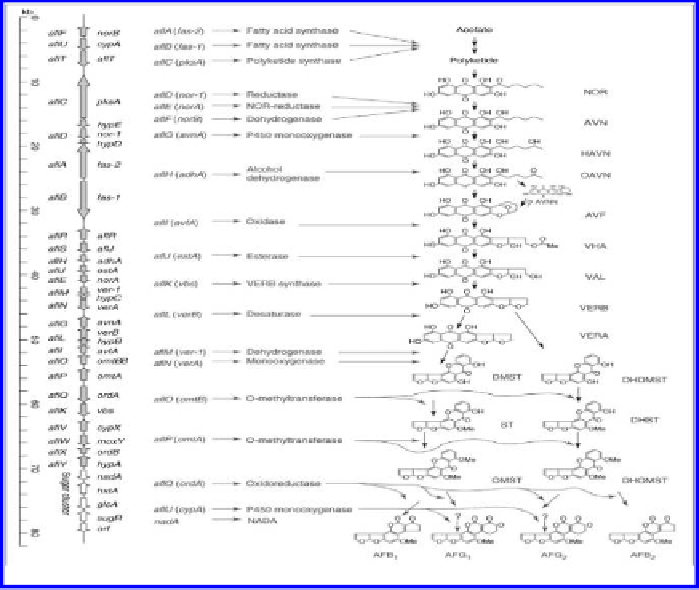Biomedical Engineering Reference
In-Depth Information
new and old names are shown on the left. The generally accepted pathway for afl atoxin
biosynthesis is presented on the right. The vertical line represents the 82 kb afl atoxin
biosynthetic pathway gene cluster and sugar utilization gene cluster in A. parasiticus
and A. fl avus. The new gene names are given on the left of the vertical line and the old
gene names are given on the right. Arrows along the vertical line indicate the direction
of gene transcription. The ruler on the far left indicates the relative sizes of these genes
in kilobase pairs. Arrows in the pathway scheme indicate the connections from the
genes to the enzymes they encode, from the enzymes to the bioconversion steps they are
involved in and from the intermediates to the products in the afl atoxin bioconversion
steps. Abbreviations: NOR, norsolorinic acid; AVN, averantin; HAVN, 50-hydroxy-
averantin; OAVN, oxoaverantin; AVNN, averufanin; AVF, averufi n; VHA, versiconal
hemiacetal acetate; VAL (VHOH), versiconal; VERB, versicolorin B; VERA, versicolorin
A; DMST, demethylsterigmatocystin; DHDMST (Cleveland et al. 2009).
(Color image of this fi gure appears in the color plate section at the end of the topic.)
biosynthesis have not been established and proposed pathways are
hypothetical
(Fig 3).
A polyketide synthase (PKS) is probably involved.
OTA is a complex molecule combining the amino acid and the polyketide
structure basically of the mycotoxin citrinin. Of course OTA is quite
different from citrinin. Regulations for ochratoxin A are present in the
European Community (FAO Food and Nutrition Paper No. 81, 2004) but
none have been established in the United States.

